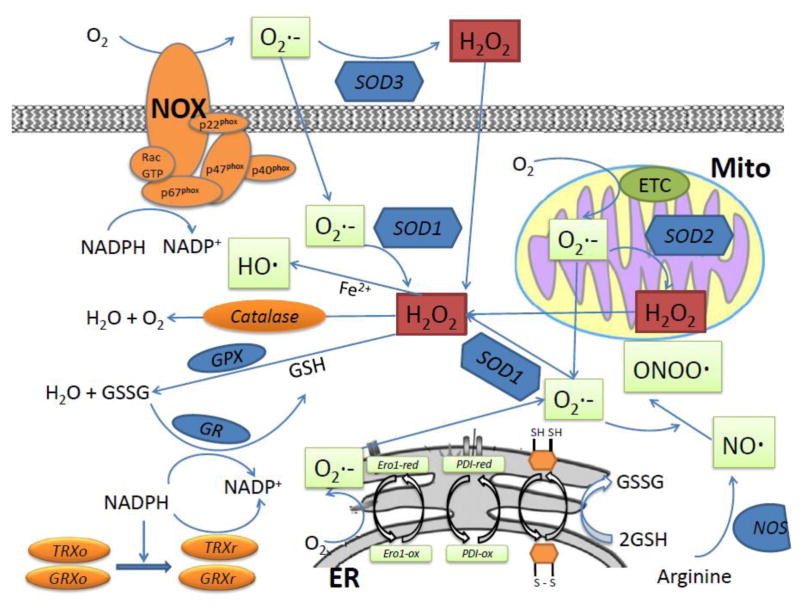Figure 1.
Cellular ROS, consisting of radical and non-radical oxygen species, are mainly generated in three sites: mitochondrial ETC; ER and NOX complex. Cells have evolved a system to maintain a homeostatic balance between pro- and anti-oxidant processes. Cellular ROS are eliminated by constitutively expressing an arsenal of detoxifying enzymes, including those directly destroying ROS such as SOD, catalase, and GPx. NADPH and GSH are primary contributors to the maintenance of a reduced cellular redox state. In a reduced state, both TRx and GRx reduce disulfides and become oxidized. Oxidized GRx is converted back into a reduced state using GSH, which is regenerated by NADPH-GR, whereas oxidized TRx is converted back into a reduced state using NADPH-TRxR. Nitric oxide synthases are key enzymes for the production and regulation of nitric oxide.

